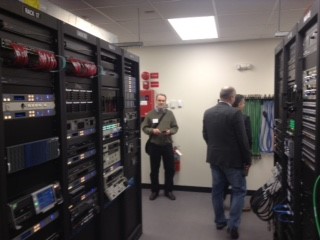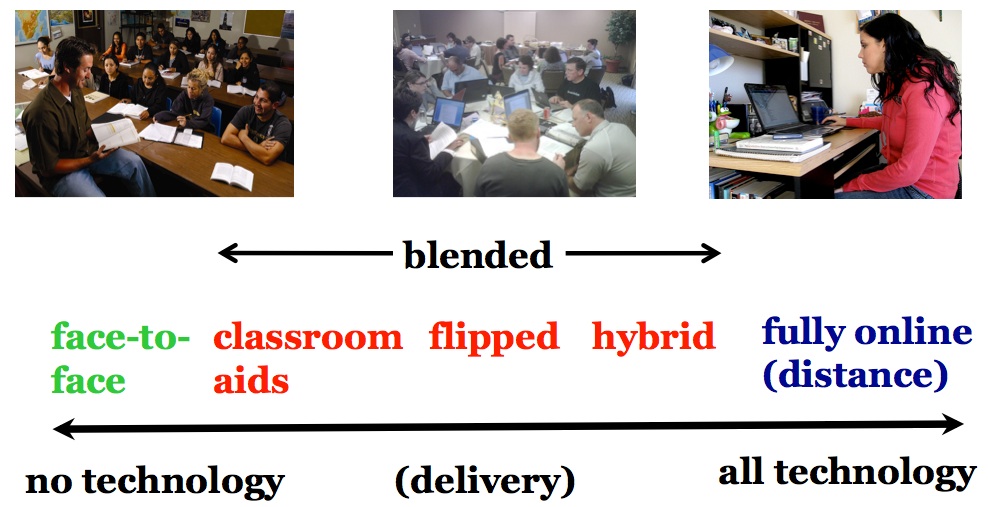Library Technology Conference, 2015
Library Technology Conference, 2015
Twitter: #LTC2015
MakerSpace slideshow: goo.gl/2aaYKQ
Digital Literacy for St. Cloud State University
Twitter: #LTC2015
MakerSpace slideshow: goo.gl/2aaYKQ
edutopia-dl-finley-53-ways-to-check-understanding
Here some opinions from the comments section:
Formative assessments are only good if you use them to alter your teaching or for students to adjust their learning. Too often, I’ve seen exit tickets used and nothing is done with the results.
Please consider other IMS blog postings on assessment
 |
 |
 |
 |
 |
 |
partners across campus for IT/AV: CETL
What is the most important key for creating active learning spaces (ALS).
Mathew shared his work with CETL and his understanding of the importance of faculty being brought to the table. Faculty as equal stakeholder in the process.
In a conversation with him after the presentation, he agreed that faculty must be the leading force in in generating ideas what new technology and how to implement technology in the classroom. He agreed that at the present IT/AV staff is the leading force and this is a corrupt statuquo
key partnerships:
faculty and academic affairs, students, facilities, architects, engineers, contractors, furniture vendors, IT (networking, support instructional design)
challanges: ITS mindset (conservative), Administration must be on board (money), Funding.
MnSCU is not Google friendly. 60% of the staff is not doing the same tasks as 3 years ago.
Open about challenges, sharing more with faculty. Nice to hear this, but the communication must be much larger, to the point when faculty are equal partners in a relationship, which is not far from equal decision making.
If faculty is not considered a REAL stakeholder (versus intimated body in a meeting which is controlled by IT people), the entire technology use goes down the drain. Faculty is much stronger relationship with students then IT is with students. The presentation put weight on IT staff and its connection with students’ needs. It is questionable how IT staff can make stronger connection then faculty, who are in a daily contact with students.
The issue is how to assist faculty to catch up with the technology, not how IT staff to rival faculty in their connection with students. What faculty lacks in understanding of technology cannot be replaced by IT staff increasing interaction with students, but rather assisting faculty with coming to terms with technology.
maintaining innovation: fail fast and fail forward; keep up to date with technology (blank statement); always look for new furniture; focus on space design instead of just A/V; Challenge yourself with new ideas; always learn from your mistakes; always get feedback from students and faculty (again, the PERIPHERAL role of faculty. Is feedback all expected from faculty? It faculty and IT staff must be equal partners at the decision table. not faculty being consulted at decision made by IT staff)
Google Glass mentioned, Pebble watches. supposedly to understand students habits. Big data used to profiling students is very fashionable, but is it the egg in the basket?
they have 3d printer, Inoculus. Makerspace mentioned
examples how to use 3d printing for education (LRS archive collections, MN digital library).
the presenter kept asking if there are questions. it makes me wonder how far back (pedagogically or androgogically) IT staff must be to NOT consider backchanneling. Social media is not a novelty and harvesting opinions and questions using social media should not be neglected
Break down session: Digital Classroom
technical, very IT. I am not versed enough to draw impression on how it projects over real faculty work. HDMI cables.
relating to the previous presentation: I really appreciate the IT / AV staff handling all this information, which is complex and important; but during my 15 years tenure at SCSU I learned to be suspicious of when the complexity and the importance of the techy matter starts asserting itself as leading when the pedagogy in the classroom is determined.
HD flow and other hardware and software solutions
VLAN 3. lecture capture.
BYOD support in the classroom: about half of the room raised their hands.
Applications to download:
http://www.wondershare.com/convert-video-audio/free-video-converter-windows8.html
Online:
no SWF
presented on Tuesday, March 3, 2015.
Steve Zimmerman (charter school director), New York
digital porfolio software: open source. Google Sites – free, but too laborious for teachers
must be student owned and intuitive interface (you cannot say this about MN eFolio)
assessment rubrics
easy sharing and feedback
accessible form mobile devices (you cannot say this about MN eFolio)
easy integration with other applications (you cannot say this about MN eFolio)
Tina Holland
she is not a test person. good for her.
writing, critical thinking, creative thinking, soft skills (communication, collaboration, negotiation). team players, problme solvers, prioritize,
education is moving from traditional teaching methods, to inquiry based. self-directed learning. from summative to formative assessment
21st century learning competencies
#DigitalPortfolio
the presentation is now available on-demand at: http://w.on24.com/r.htm?e=936737&s=1&k=93DDFD3EB35B18A080B8EB13DD8FA770.
More on digital portfolio in this blog:
http://www.tonybates.ca/2015/02/21/10-key-takeaways-about-differences-between-classroom-blended-online-and-open-learning/
Tony Bates shares his thoughts on the difference

Chapter 10 of Tony Bates online open textbook, Teaching in a Digital Age:
More on F2F, blended/hybrid and online learning in this blog:
https://blog.stcloudstate.edu/ims/?s=blended
http://www.teachthought.com/trends/byod-is-shortest-path-to-student-centered-learning/
By allowing students to bring in their own devices for learning–rather than insisting that they learn both content and device in school–there is an important opportunity to connect with not just their personal lives, but their natural way of doing things.
Equity
While there are students who badly want technology and can’t afford even the $50, that doesn’t seem to be a strong argument against BYOD adoption, especially in light of what it costs—in time and money—to purchase, train, integrate, and maintain—state-funded, district-purchased, school-assigned devices. This is where schools, local organizations, and communities can step in.
Money and Learning
In the United States there can be a tendency to throw money at problems that are not fully understood. As a nation, America lags behind internationally, the “learning market” being one of the few markets proving evasive in lieu of continued effort, struggle, and spending.
More on BYOD in this blog:
https://blog.stcloudstate.edu/ims/?s=byod
http://www.teachthought.com/technology/11-sample-education-byot-policies-to-help-you-create-your-own
http://campustechnology.com/webcasts/2015/03/stratasys-integrate-3d-printing-033115.aspx
More on 3D printing in this IMS blog:
The author erroneously focuses on Snapchat as a service and university administration, monitoring and censorship; it is a basic issue of education. Educating the Millennials and Gen Z about privacy, netiquette and digital humanity.
Education is about letting students explore, fail, learn from their failure and improve. #FinlandPhenomenon
From the responses under the article:
Still trying to understand the academy’s apparent obsession with monitoring and controlling/influencing every possible aspect of student and faculty behavior, on and off campus. Sometimes I can’t decide if it’s kind of a Stalinist control thing, a guy in the back of a windowless van thing, or some kind of extension of a juvenile obsession with everyone’s behavior but your own. That someone complains does not automatically suggest that someone must “do something,” particularly when “doing something” is often prohibited by law to begin with (in the case of administrators and the university).